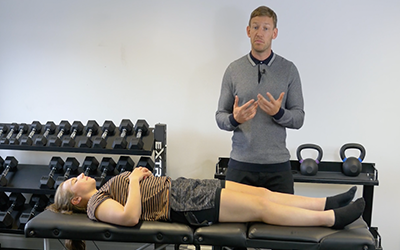How To Take ‘Shortcuts’ With Your Patient Assessments
Posted By: Andy Barker
You were taught in University that at the end of the assessment, (ideally at the end of the subjective assessment), you should be able to able to diagnosis what your patient’s problem is.
But…
It often is not quite as easy as that.
Not being able to make sense of your patient assessments is one of the biggest problems that New Grad’s tell me about and for many, this is their biggest challenge that is affecting their ability to manage their patients in the best possible way.
In this blog you will discover how to take ‘shortcuts’ with your assessments, cut out the noise and make that patient diagnosis much, much easier.
Watching In Amazement!
I remember my first MSK placement and how my educator at the time, a Band 7 physio, made his assessments look so easy.
He looked like he could do them with his eyes closed.
I watched in awe at the speed and fluidity of both his subjective and objective assessment, how well they flowed together and then at the end of the assessment how well he explained his findings back to the patient.
I’m sure you’ve seen this yourself, whether it was during a student placement or when observing a senior colleague.
But how do they do it?
Smart People Take Shortcuts All The Time
Competent therapists seem to be able to take shortcuts in their patient assessments all the time.
Expect most of the time they don’t even look like shortcuts.
How is it so, that even with a highly complex injury an experienced therapist might do LESS assessment tests and ask less questions compared with much simpler injury?
Surely if it is a more complex injury it surely requires a deeper level of assessment?
To use the objective assessment as an example, to be able to select the right test, and the right test only, firstly you need to know all the relevant tests.
A big problem New Grad’s have, is that they just fall back on what they have been taught previously.
For example, you might have a patient with a knee injury and as a result you just test EVERY knee assessment technique you know, regardless on their mechanism of injury, their subjective presentation and the responses to your questioning.
Knowing what objective assessment test to use is tough when you only have a select few tests to choose from.
And even tougher if the tests you know, don’t include the relevant tests that you need to use with that specific patient laid on the bed in your clinic room.
Only Test What You Need To Test
This is how to take ‘shortcuts’ with your patient assessments.
You just become more specific with your questioning (subjective assessment) and more deliberate with the tests you select in your objective assessment.
This is how experienced therapists can ask less questions and do less objective testing, with even highly complex injuries, get the right diagnosis and make it look easy.
Every intervention you have with a patient, whether it relates to your patient assessments, hands-on treatment techniques or rehab planning, MUST be specific.
This is how you get the right the result, a positive result and a result in the quickest possible time.
Only ask the questions that need asking.
Only test the test that need testing.
Key Points
‘Smart’ therapists take shortcuts with their patient assessments by;
Only asking the necessary questions for that specific patient
Only conducting the necessary tests as part of the objective assessment
Be SPECIFIC with what you are asking and what you are testing, and this will simplify the assessment and help you be able to make better sense of your patient assessments
If you found reading this blog post useful you will also find BIG value in my book ‘How To Become A Competent, Confident & Competitive New Grad Physio.’
A large section of the book talks about competency and how it is so important to develop competency in specific areas of your practice.
Having greater competency in your assessments skills, hands-on treatment techniques and rehab planning will allow you to make a positive impact on the patients you are working with in your day-day practice and in the book you will find out how to do this.
Get your copy HERE

